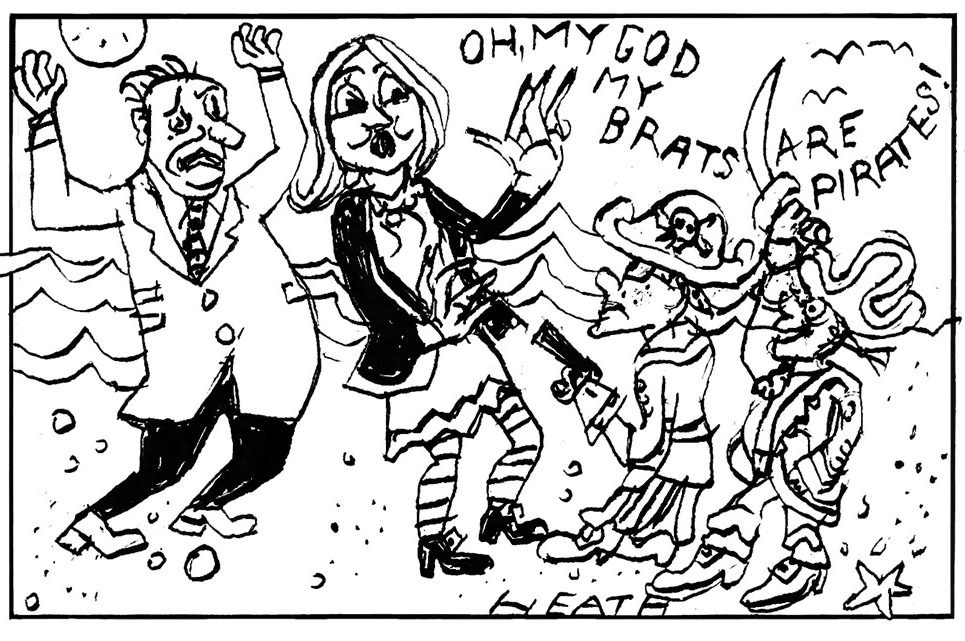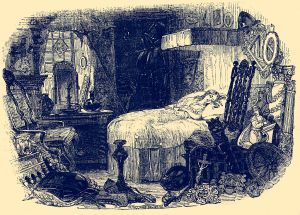If there’s one thing to bring out your inner Herod, it’s the twee tendency in younger children’s books. It’s at its worst in the depiction of pirates. Ten Little Pirates shows them cute; The Pirates Next Door as rambunctious; Never Mess with a Pirate Princess as egalitarian; Pirates Love Underpants as… oh stop it.
It is the latest aspect of our long-standing obsession with pirates, though it’s never been so commodified or so anodyne. Well, there’s going to be a bracing corrective when London’s National Maritime Museum launches its Pirates exhibition next year. It’s not aimed at rehabilitation. Interestingly, although it focuses on the Golden Age of Pirates, roughly the 1680s to the 1720s — Blackbeard et al — it’ll expand the geographical scope to the South China seas and bring the phenomenon up to date: no one has ever tried to glamorize Somali pirates off the Gulf of Aden.
The curator, Robert Blyth, wants to debunk some of the most cherished assumptions about pirates. No more captives walking the plank — “Why would you?” he asks. “Just throw them overboard.” No buried treasure. And positively no treasure maps. On the plus side, the pirate ensign the Jolly Roger was an actual thing, though sometimes there were other sorts of memento mori: hourglasses, skeletons and the like. After flying under false colors, the pirates would raise their ensign, sometimes an ISIS-style black flag, as they drew near the victim-vessel, or worse, a red flag, to indicate no quarter would be given.
Much of the legend comes from Captain Charles Johnson’s A General History of the Pyrates (1724), “with the remarkable Actions and Adventures of the female pirates, Mary Read and Anne Bonny” — they got large type on the title page. From that thrillingly bloodthirsty account the rest follows: Treasure Island above all, followed by Peter Pan and Captain Hook.
Some of our notions of piracy may falter, confronted by the Welsh Bartholomew Roberts’s robust on-board discipline. It was lights out at 8 p.m., no gambling on board, disputes to be settled on shore and anyone who wanted to carry on drinking had to do it on deck. He captured 400 vessels. There was some truth in the notion of pirate democracy, though when battle was joined, the captain’s word was law.
Pirates did not have a particularly liberal approach to slaves — “It was cargo, like anything else,” says Blyth — but the slaves might, like the captured crew, have the option of joining the pirates. That was one reason why many crews were multi-national; 60 percent of Blackbeard’s were African. Cheeringly the diverse pirates in Asterix, with the African lookout, were realistic.
Most pirate careers were tellingly short. The risks increased as the Royal Navy increased its patrols. Pirates, once tried, would usually be hanged, and not nicely either, but with a short rope, so they courld take forty-five minutes to die. Blackbeard’s head was chopped off in a navy raid; Roberts’s throat was blown out.
It’s time to see off the books with the twee little pirates who cause only mischief, the pirate-themed birthday parties with their fun Jolly Rogers, the manageable menace of pirate Playmobil. Revisionism, even for pirates, has its limits.
This article was originally published in The Spectator’s UK magazine. Subscribe to the World edition here.

























